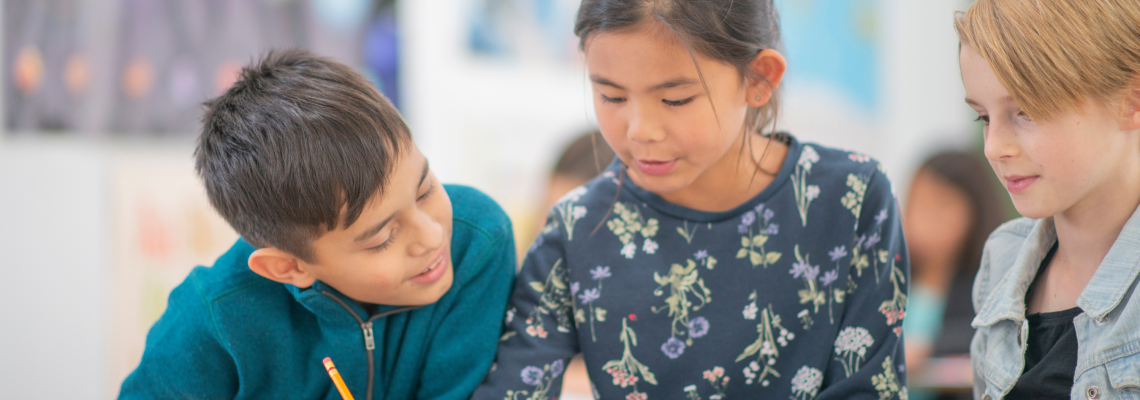
Without fail, one of the most frustrating classroom experiences is trying to get students’ attention when no one is listening. I ask everyone to pause for a moment, and a few heads turn. However, when it becomes clear to all that it didn’t work, they return to what they were doing or saying and the noise persists.
Perhaps just as frustrating is the experience of trying to give instructions, but before I finish, students are chatting or starting to work. And I have no doubt that five minutes later, a significant percentage of the class will be asking me for clarification on the instructions they didn’t hear the first time.
These frustrations are common, but according to Michael Linsin, founder of Smart Classroom Management and author of several works on the topic, we can do something about it.
What are Stop and Go Routines?
We know this is not a revolutionary concept, but as is often the case, brief reminders of the most fundamental ideas help us stay focused on the important work. Therefore, we find ideas like these popping back up now and then to remind us.
Stop and Go Routines are the simple signals we use to inform students that it is either time to begin working or time to stop or pause working.
Linsin reminds us in his article on how to get students’ attention that “The ability to get your students’ attention anytime you need it is critical for good teaching.” Similarly, in another article, he argues the importance of preventing students from moving on mentally until instructions are finished.
Combined, these two aspects, signals for when to start and when to stop, constitute Stop and Go Routines.
How to Successfully Implement Stop and Go Routines
To help us achieve the desired end effectively and efficiently, we return once more to Linsin’s insights, specifically, the 11 steps that he outlines for teaching and practicing the routine with students.
- Explain the importance of having a signal. The ‘why.’
- Introduce your signal and model how you’re going to give it.
- Model how you want them to respond—getting quiet and looking at you.
- Set your expectation. For example, you want them silent and facing you within one second. (Yes, this is doable.)
- Practice. (See the following steps.)
- On your “go” signal, have your students turn to each other and pretend to be in discussion. You can also have them move around the room.
- A fun way to mimic discussion is to have them repeat “murmur, murmer,” “hey, hey, whaddya say,” or “blah, blah, blah.”
- Practice each phrase once and then have them choose whichever they want on the last practice repetition.
- Vary the amount of time they “discuss” before giving your attention signal.
- Praise, of course.
- Use your attention signal for real within ten minutes of practicing.
(From Linsin, “How To Get Your Students’ Attention Fast“)
For clarity, consider the main ideas within these steps: (1) teacher the routine, (2) practice the routine, and (3) implement the routine.
PART 1: Teach the Routine
As Linsin notes, it is important whenever sharing a new routine or protocol with students to articulate why you are doing that thing. Most students are willing to get onboard with an activity if they see the purpose for it.
In this instance, expressing to students not only that the routine will help you, the teacher, but also and more importantly that it will help them, the students. Express to students how it is easy to miss an important detail when our minds are already moving on. Talk about how much more we can do when transitions are quick.
And while the argument is predominantly one of supporting learning, we also need to express to students what we must do when the routine is not followed. Consequences. If they fail to follow the routine, we must hold them accountable. This is not a punitive or oppressive mindset but rather one of order and expectation. Once students know what is expected and have a chance to demonstrate that (see part 2 below), we are responsible for holding them to it.
Why this strong position? Simple. If we don’t, then we communicate to students that the expectation is not that important. “I want you to do this, but I’m not actually going to enforce it.” That’s a recipe for a classroom management disaster.
To teach the routine, then, we talk about why it matters, we talk about what it looks like, and we talk about what happens if it is not followed (and an aside, Linsin always reminds us that these kinds of things should not be a surprise to students but rather should follow a clear and ongoing classroom management plan already in place).
PART 2: Practice the Routine
Having taught the routine to students (in as little time and words as is necessary–keep it brief!), it’s time to practice. This should be a routine aspect of every classroom protocol or activity: practice the thing together so we all know what it looks like and how to make it happen.
Linsin’s suggestions for how to do that above are helpful, and it is a good reminder to us all that it can be fun and lighthearted. Whatever the exact nature, we simply need to make sure we take the time to do so. Sometimes this works well whole-class, and sometimes it is helpful to start with a demonstration in a fishbowl (small group of students).
Remember that the most effective practice is also reflective, so take the time after practicing to ask students about the experience: what was hard? what was easy? what helped? what should we do differently? Don’t just ask students to reflect, though. Share your own thoughts, praising (thanks again to Linsin!) successful moves by students and identifying possible hang-ups that may arise.
PART 3: Implement the Routine
Once again, Linsin’s reminder is poignant. If we spend the time to teach students a new routine, then fail to use it for a day or two, chances are we are going to have to teach them over again. This is not because of some fault of the students. It is simple reality.
Therefore, find an opportunity to use the routine in its likely authentic context as soon as possible, at the very least that same day. If that’s not possible, then it may be better to wait to teach the routine until a day when it can be used.
A Final Reminder about the Say Do Gap
Perhaps originally credited to 1960s advertising guru David Ogilvy, the Say Do Gap refers to the difference between what I say I am going to do and what I actually do.
In teaching terms, this means that if I say a certain thing will happen, I need to do my very best to make sure it happens. If I tell students that I will always get their attention with a certain signal, I need to use that signal as exclusively as possible every time I need their attention. Similarly, if I say certain consequences will follow certain actions, they need to do so.
Why is this so important? Because my credibility as a teacher in my students’ eyes suffers every time I say one thing and deliver another. Additionally, one of the best things I can do for my students in the classroom is create a predictable and stable learning environment. All of this suggests that my say do gap needs to be as small as possible.
This combined with a simple yet effective strategy like Stop and Go Routines ensures a better school day for everyone!
(Learn more about this and over 100 other classroom strategies to support engagement, instruction, and more in our Instructional Strategies Library!)

